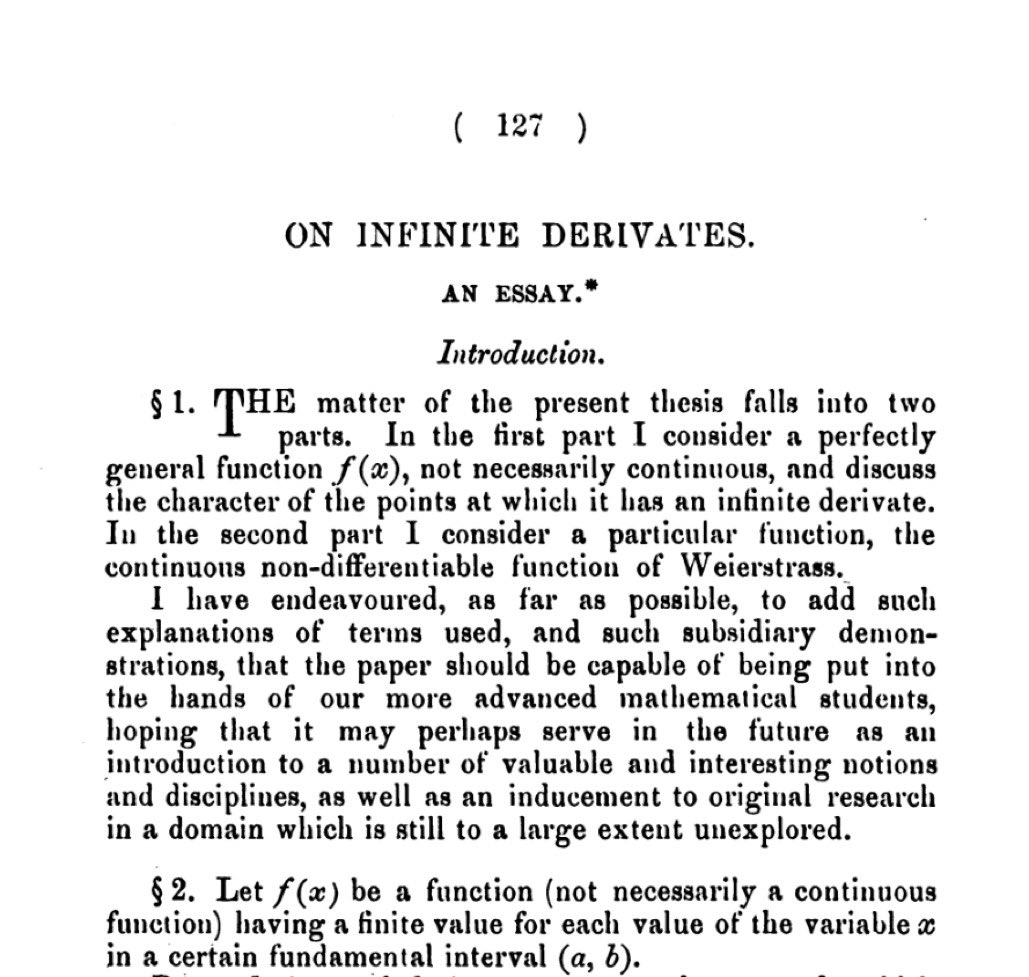
Gottfried Wilhelm Leibniz was born #OTD in 1646. He was one of the great polymaths of the age, and is best known for discovering differential and integral calculus independently of Isaac Newton.
Image: Wellcome Collection
Image: Wellcome Collection

Leibniz developed the calculus after Newton, but published first. Newton probably developed the central ideas in the mid-1660s, and circulated unpublished papers (written as early as 1669) among colleagues. Leibniz had his main insights in the mid-1670s, and published in 1684.
However, we still use Leibniz's superior notation: ∫ for integrals, and d for differentials.
∫dx x = ½ x² + constant
∫dx x = ½ x² + constant
Leibniz first used the symbol ∫ in his unpublished manuscript "Analyseos tetragonisticae pars secunda” (1675). The elongated "s" for "summa" replaced the notation "omn," for the latin "omnia" indicating "the sum over all small things."
Image: Gottfried Wilhelm Leibniz Bibliothek
Image: Gottfried Wilhelm Leibniz Bibliothek

Henceforth, please STOP saying "integrate" and START gravely intoning "I invoke the sum over all small things."
(I meant to tag @SeamusBlackley in that last tweet.)
Leibniz is also known for his succinct formulation of the Primordial Existential Question. In his 1714 work "La Monadologie," he asked “Why is there something rather than nothing?”
If you’ve ever found yourself wide awake at 3am trying to square that circle, you are my people.
If you’ve ever found yourself wide awake at 3am trying to square that circle, you are my people.
"La Monadologie" was published posthumously, so perhaps Leibniz already had a definitive answer to the question by the time readers appreciated his prehumous arguments.
I don't know who else sits in the little sliver of intersection when you Venn diagram interest in “archaic calculus terminology” and “AD&D first edition hardcover books.” But whoever you are, I tried to get the layout of the spell just right.
For everyone mentioning Neal Stephenson’s “Baroque Cycle,” yes this is one of my all-time faves. My one and only collaboration with Lee Smolin was bringing Neal to the Perimeter Institute for the Quantum to Cosmos festival back in 2009.
My wife introduced me to “Quicksilver.” Before we met, she worked at Harper Collins as the assistant to Neal’s editor. She gave me this when we started dating, it is one of my prized possessions. 

• • •
Missing some Tweet in this thread? You can try to
force a refresh














